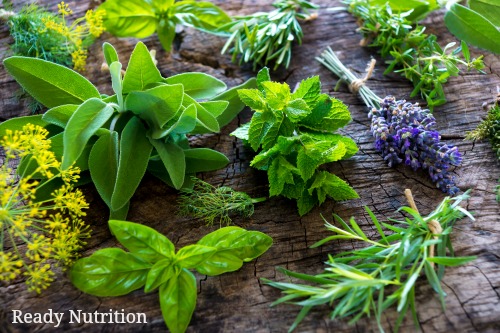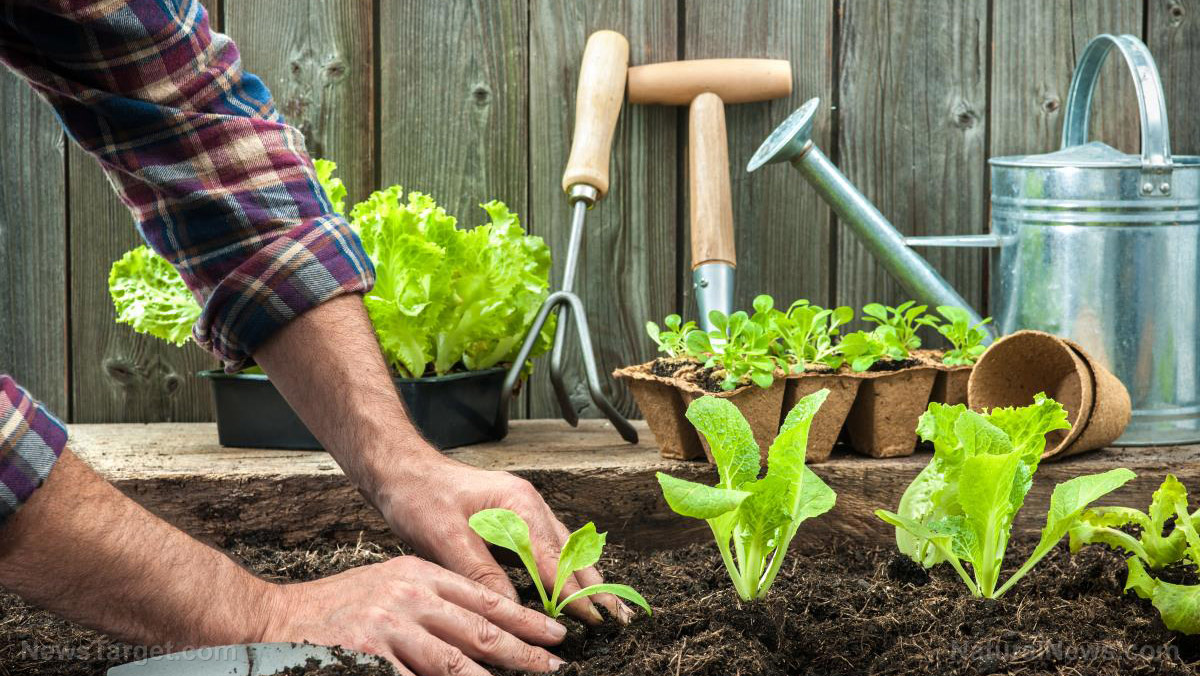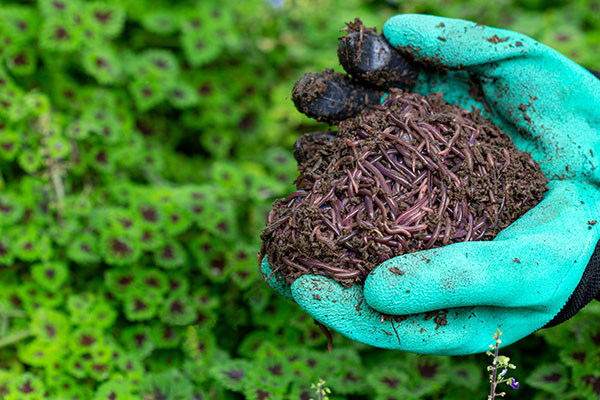20 Medicinal Herbs That I Have in My Prepper Garden
by ess Pennington, Ready Nutrition:
 So, many of you may be asking my I want to go to all the trouble and grow herbs and roots for natural healing. You can read about seven reasons why I started a medicinal garden, but in short, I wanted options at my disposal. From a preparedness standpoint, I know that infection and illness could be very prevalent in the aftermath of a disaster and accessibility to medical care will be difficult to find. As well, with the massive over-prescribing of antibiotics in our modern healthcare industry, today’s crop of antibiotics has become less effective. Let’s be honest, bacteria has a 4 billion year head start in the evolution and has been adapting to environmental changes since the beginning of time. The time will come when antibiotics will be moot in terms of its effectiveness.
So, many of you may be asking my I want to go to all the trouble and grow herbs and roots for natural healing. You can read about seven reasons why I started a medicinal garden, but in short, I wanted options at my disposal. From a preparedness standpoint, I know that infection and illness could be very prevalent in the aftermath of a disaster and accessibility to medical care will be difficult to find. As well, with the massive over-prescribing of antibiotics in our modern healthcare industry, today’s crop of antibiotics has become less effective. Let’s be honest, bacteria has a 4 billion year head start in the evolution and has been adapting to environmental changes since the beginning of time. The time will come when antibiotics will be moot in terms of its effectiveness.
I love natural remedies solely for their simplicity and worry-free use. It is difficult to overuse natural remedies, but more importantly, they have been used for centuries. While researching which medicinal plants I wanted in my garden, I made sure that many of them were hardy perennials that could perform multiple medicinal duties. I don’t have a lot of space where my herbal garden is, so the plants had to be exceptional. These 20 herbs made the cut and I couldn’t be more pleased with my choices.
Ready Nutrition writer and herbalist, Jeremiah Johnson has written extensively on how to cultivate a medicinal garden to use in a long-term emergency. His favorite medicinals are what he refers to as the 3 G’s: garlic, ginger, and ginseng. You can read his article on the subject.
Angelica – This herb is one that everyone should be growing in their garden. It’s great for children, adults and the elderly. It has antibacterial properties, astringent properties can be used externally as a medicinal gargle for sore throats and mouths and as a medicinal poultice for broken bones, swellings, itching, and rheumatism. It is also known for strengthening the heart. A powder made from the dried root can be used for athlete’s foot, as well as an insecticide and pesticide.
Calendula – Also known as pot marigold, this pretty yellow flower is believed to be one of “the greatest healing agent for all wounds.” It naturally cleanses wounds and promotes rapid healing. It slows bleeding in some cases. Marigold was also used as a toothache and headache preventative in the 1500’s in England. It is an excellent herb to have on hand for skin issues such as eczema, skin inflammations, soothing varicose veins, soothing chapped hands and can be used to reduce body scars. Commonly made into oil by soaking fresh or slightly dried plant parts in one’s choice of base oil, it can be applied topically to relieve all sorts of fungal infections.
Catnip – Your cats may be drawn to this herb, but it has plenty of medicinal uses and a wonderful herb to have in the herbal medical cabinet. Most notably, it has sedative effects and helps calm the nervous system. Making a tea from this herb before bedtime will help settle the body. It also has anti-fever properties, as well as antibacterial effects. The compound can also be used to repel common insect pests such as mosquitoes and cockroaches. When nepetalactone is distilled, it is more effective than DEET than repelling mosquitoes. As a matter of fact, it is up to 10 times more effective in accordance with laboratory experiments conducted by isolating the compound via steam distillation. Read more about using this herb here.
Chamomile – This herb is also most recognized by its sedative effects, but has more to offer than just that. The flowers can be strained out of the tea and placed into a warm compress to use on ear infections. Tea compresses and tea rinses can be used to gently treat eye problems. It also has the power to assist in comforting the effects of indigestion, morning sickness, nervousness, neuralgia, painful periods and assists as a sleeping agent.
Comfrey – I just added comfrey to my garden this year. Not only does it have medicinal values, but can be used as a nutritional supplement to livestock and used as a fertilizer because it is high in potassium. To make a liquid fertilizer: chop off the top of a comfrey plant and throw the leaves in a bucket. Cover with water and let them rot into green liquid… then water whatever needs a boost. Medicinally speaking, comfrey is also known as “one of nature’s greatest medicinal herbs.” It helps heal wounds and mend broken bones, and even helps to bring fevers down. Nutritionally, it is a good source of vitamin C and calcium.
Echinacea – Although the root is most widely used for its medicinal purposes, truly the entire plant can be used. This herb strengthens the body’s ability to resist infection and stimulates the production of white blood cells. Echinacea stimulates the body in non-chronic illness such as colds, bronchitis, sore throats, abscesses and for recurrences of yeast infections. Echinacea can also be taken as an anti-inflammatory for arthritis. A gargling solution can also be made with the tea to use with a sore throat. For cases that are not strep throat related: add 10-16 drops of water or to sage or ginger tea and use as a gargling agent. If a person is fighting strep throat: every two hours, gargle with the above-mentioned teas to which add a drop full of echinacea extract.
Garlic – This is simply a must-have in your garden. Its medicinal uses are too extensive to list but can be read in more detail here. In short, it is effective in preventing the common cold, reducing recovery time, and reducing symptom duration. An infused oil can be made from garlic to treat wounds and ear infections. And, I need not mention all of its culinary uses.
Ginger – the medicinal value of this root is amazing. In fact, recent studies have revealed that ginger may be stronger than chemo in fighting cancer. It’s truly a remarkable medicinal to have in your garden. Here are 8 more benefits of ginger.
Ginseng – This herbal powerhouse assists with nervous disorders, helps alleviate symptoms related to cardiovascular and blood disorders, is beneficial for diabetics as it reduces the amount of blood sugar in patients with mild to moderate diabetes, inhibits the formation of tumors and helps as a cancer preventative, and helps to minimize the effects of X-rays and radiation produced by radiation therapy as well as negative effects caused by free radicals are minimized and reduced by the adaptogens in ginseng. Read more here.
Lemon balm – This is one of my favorite herbs. This herb is great for adding a light lemon flavor to dishes, but I love it for its sedative qualities. If you have problems sleeping, this is a great herb to take before bedtime. The aromatic properties help with alertness and can sharpen memory. It is also a good herb for diabetics to use as it helps regulate blood sugar. The antioxidant properties present in this herb are also beneficial.



